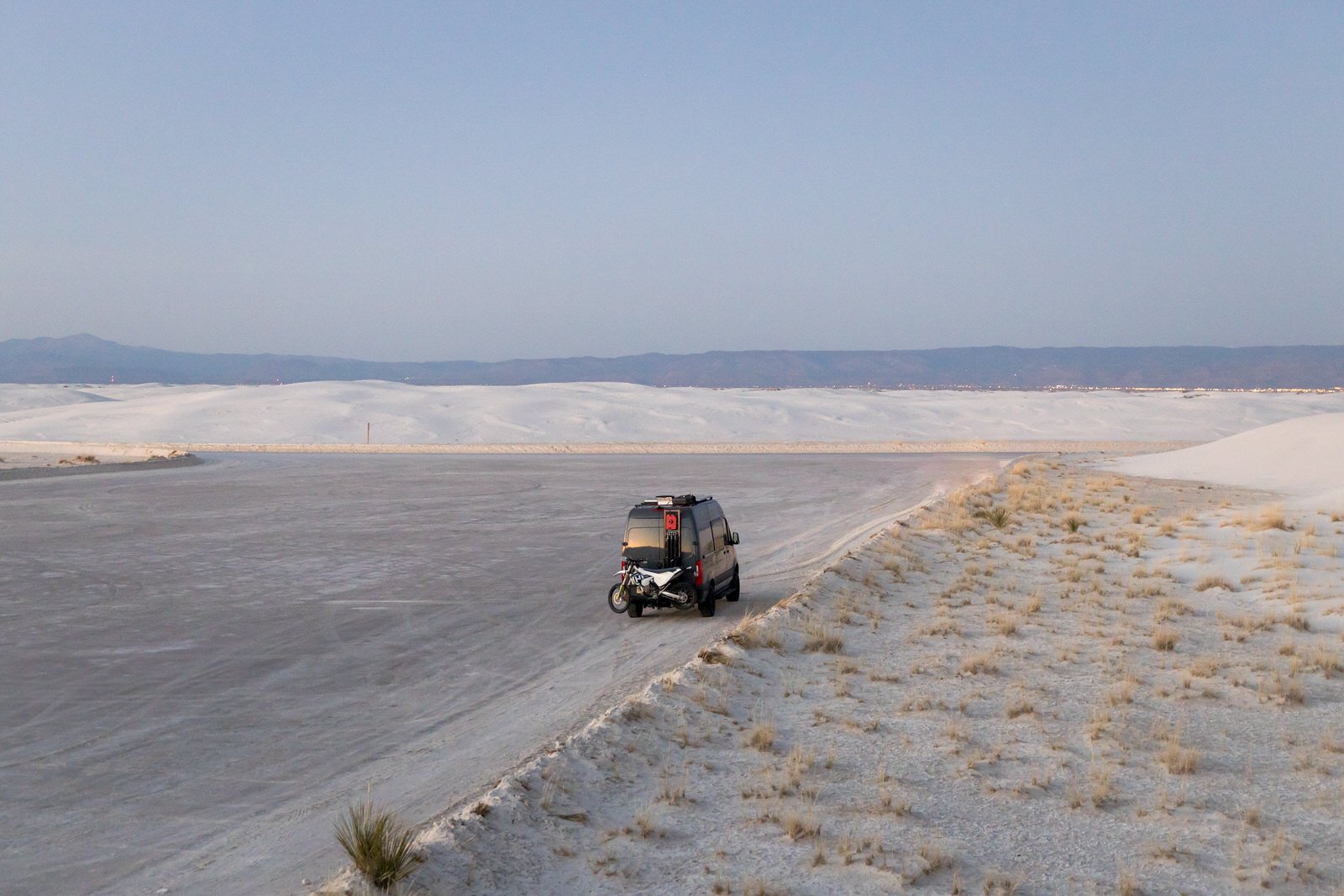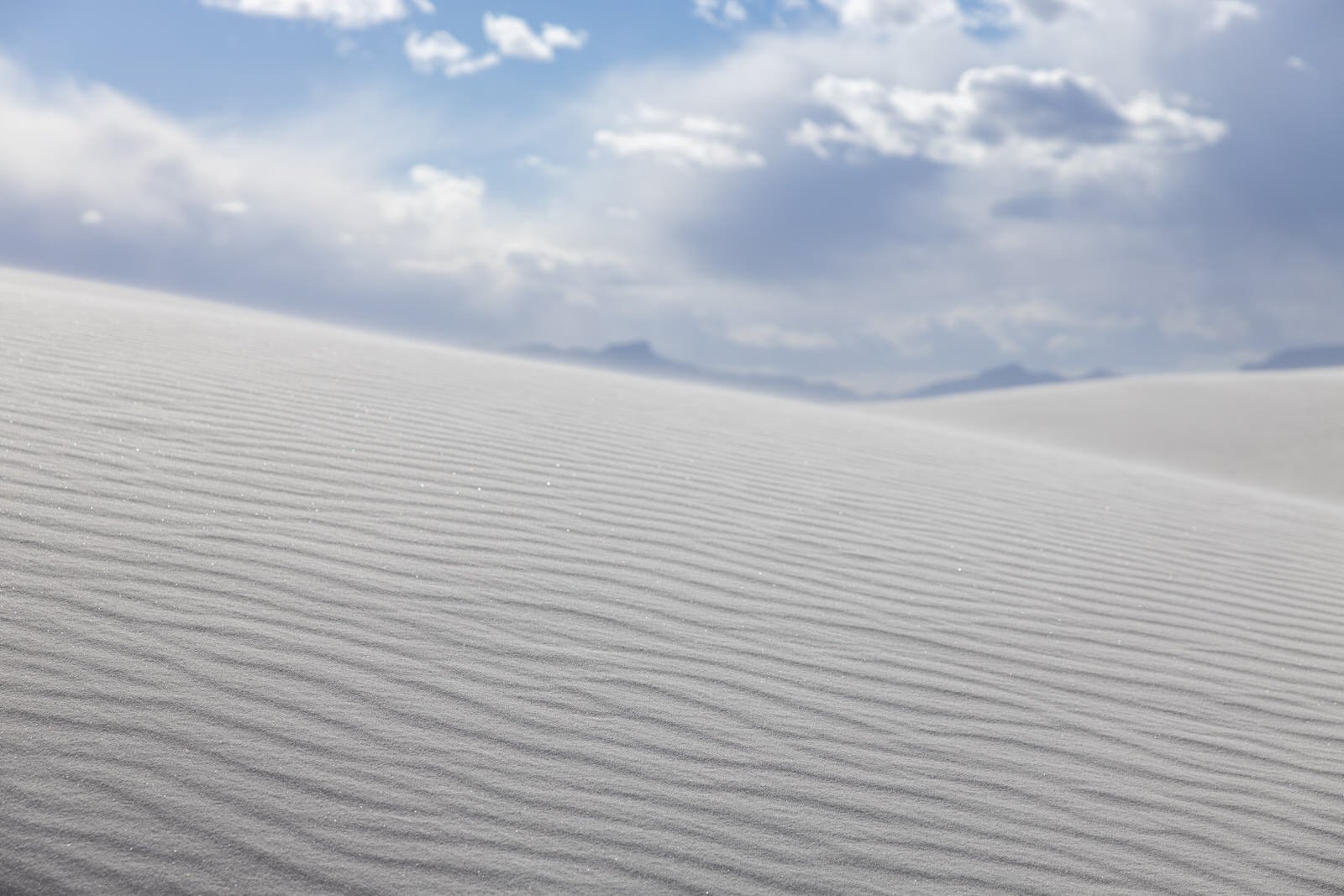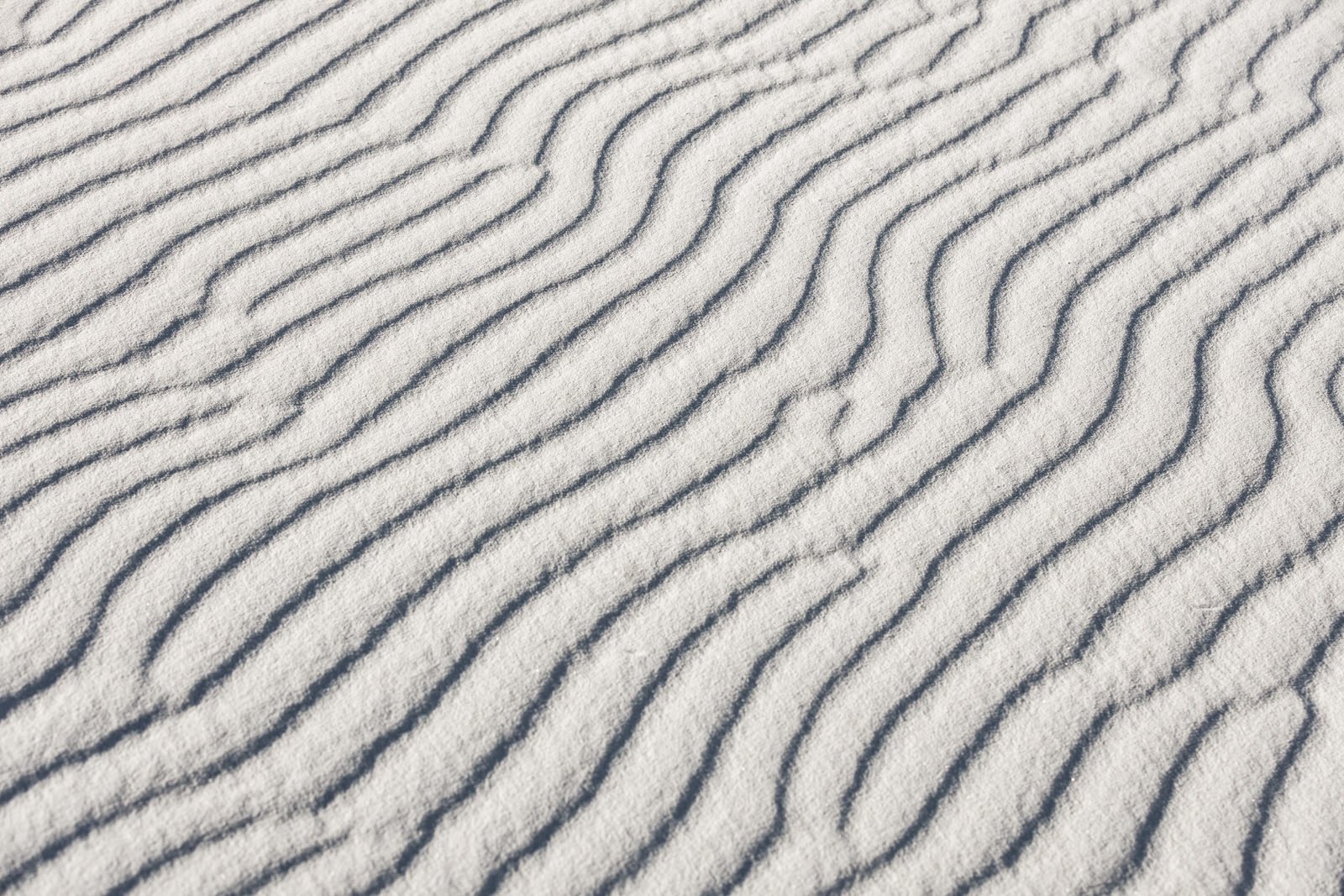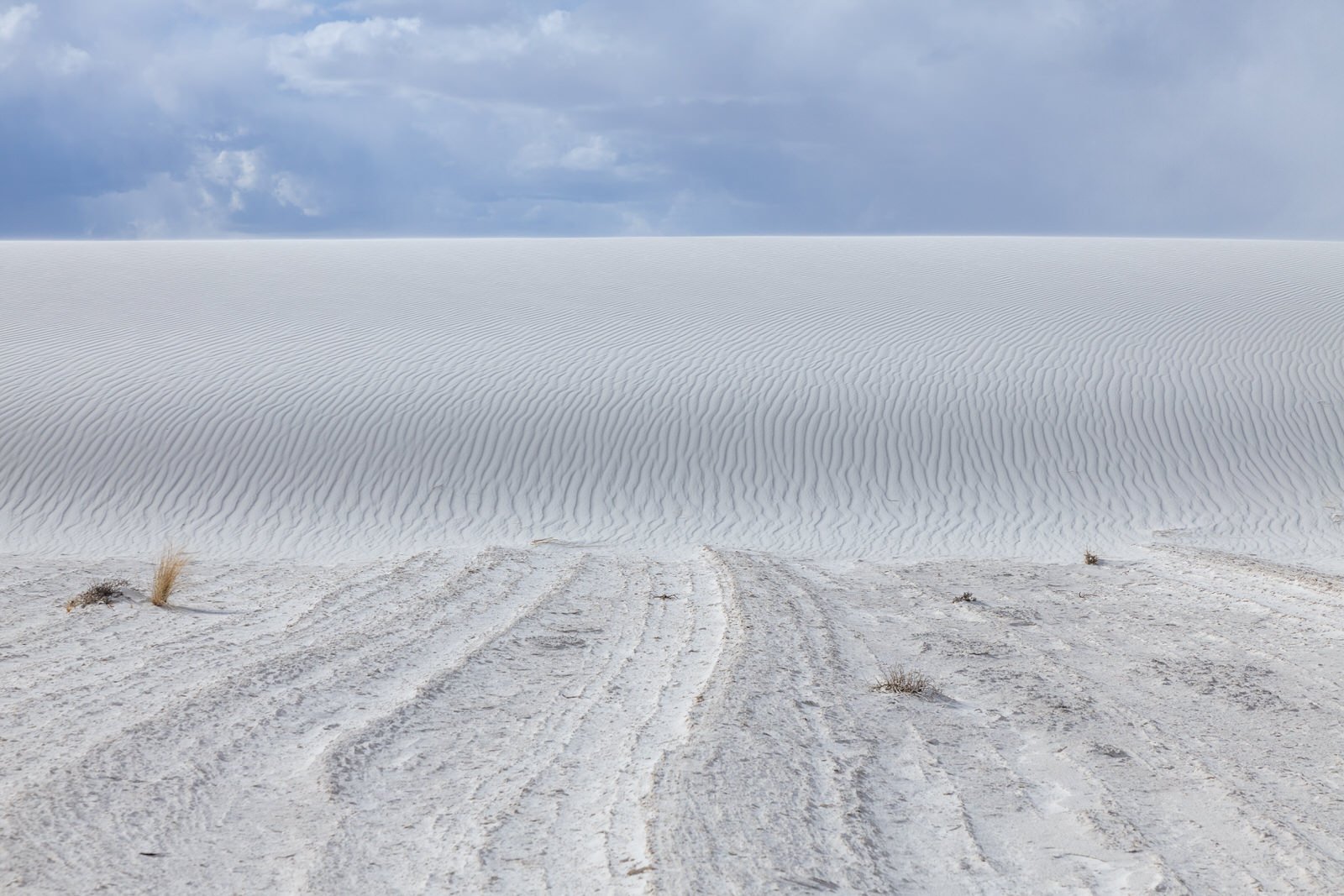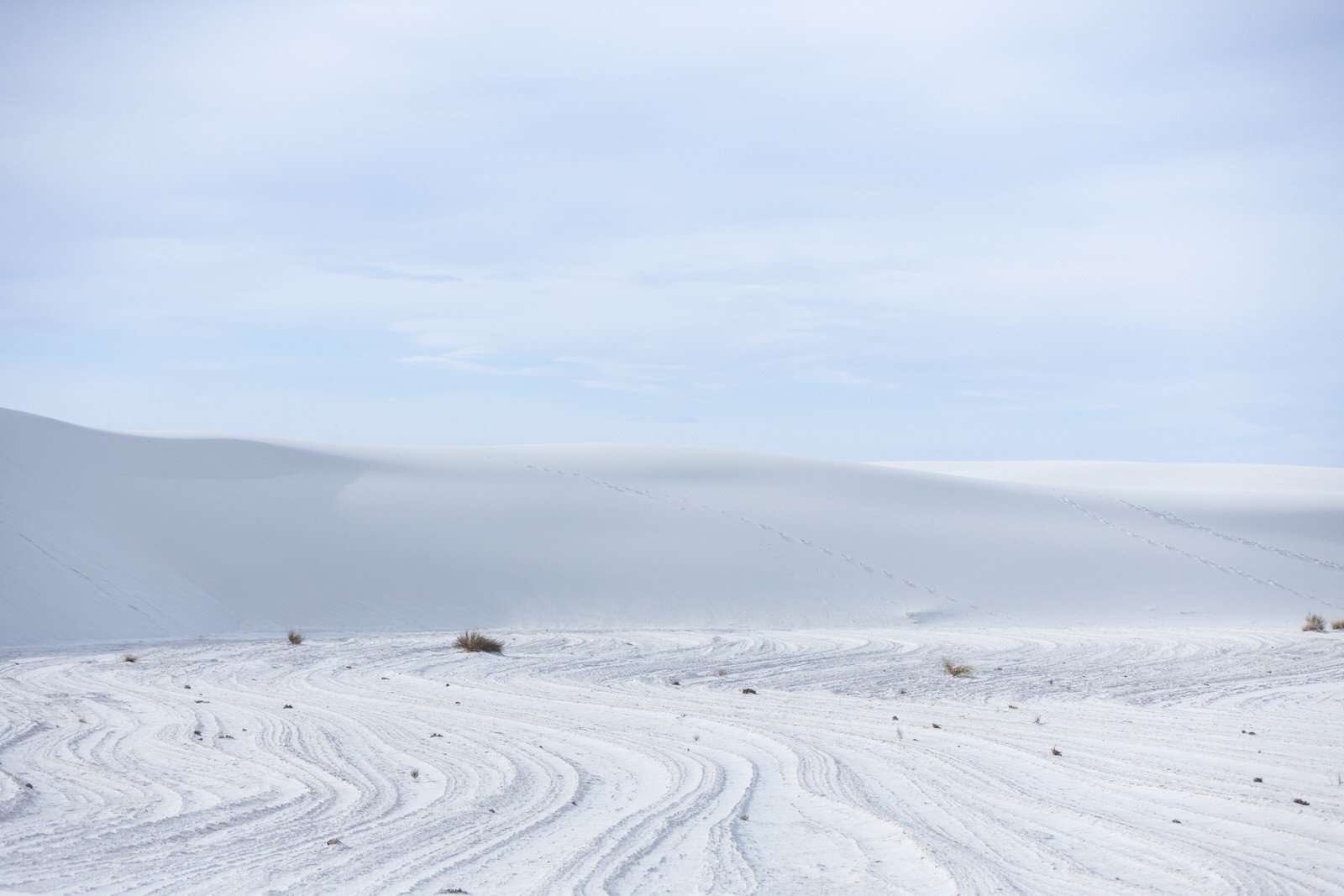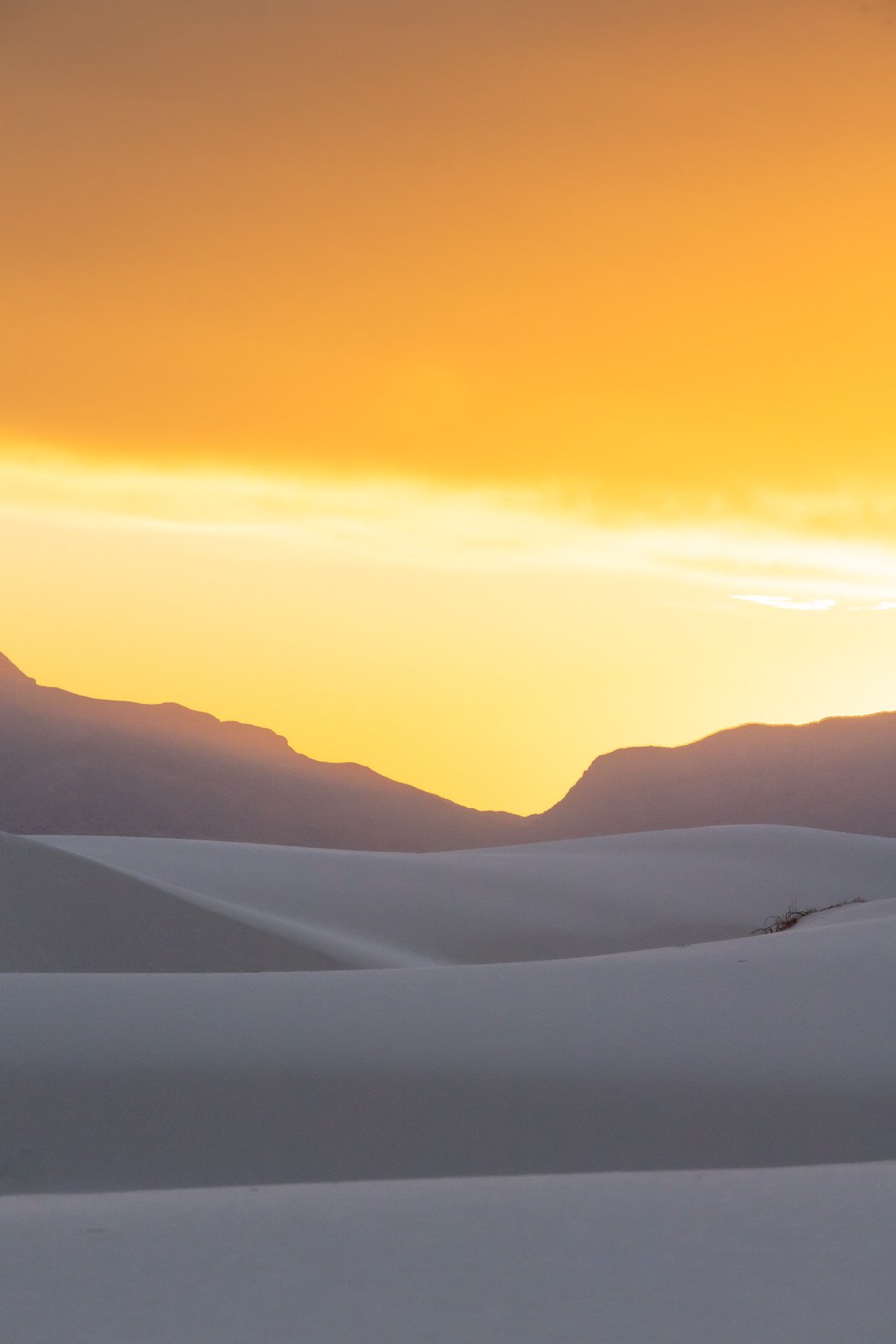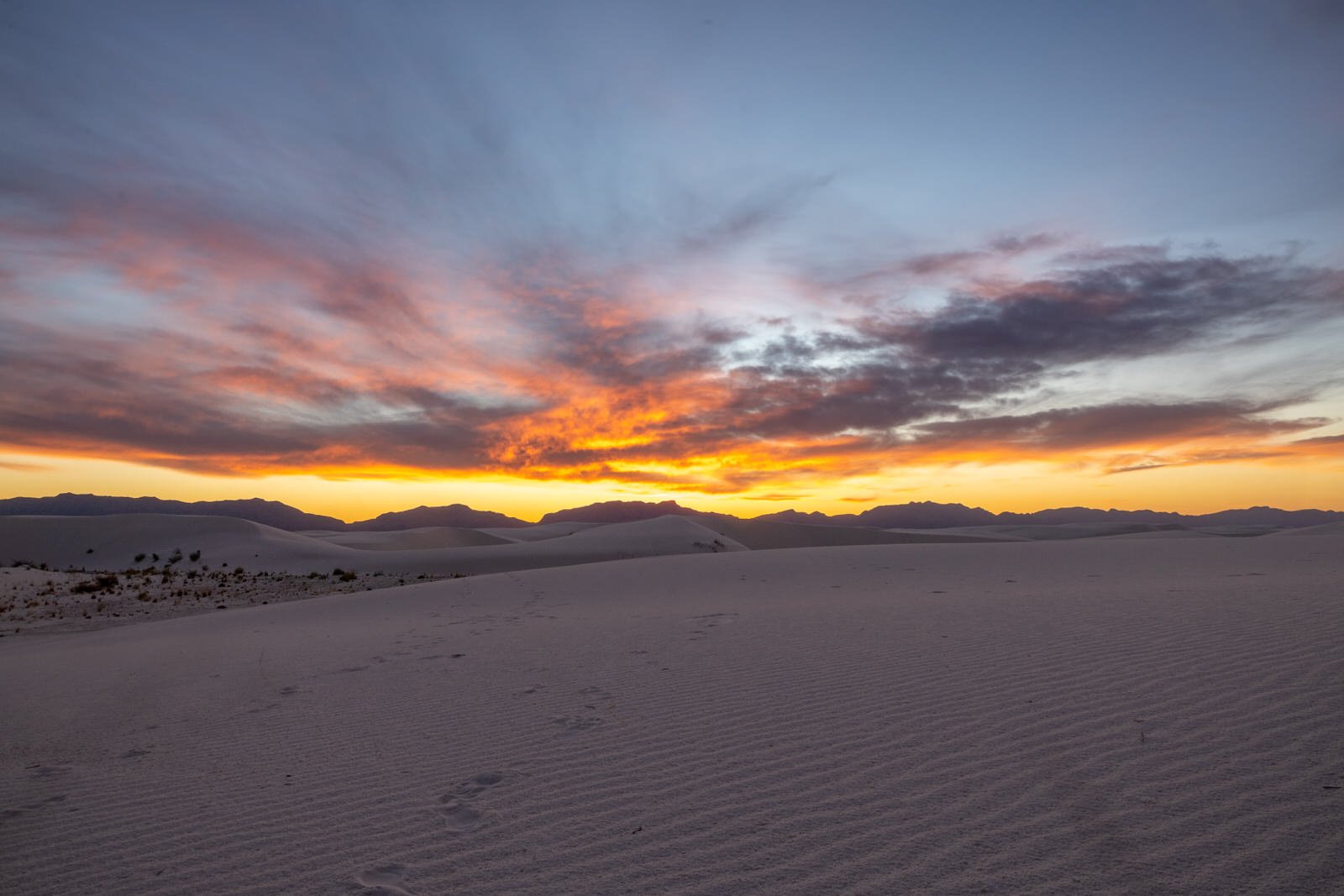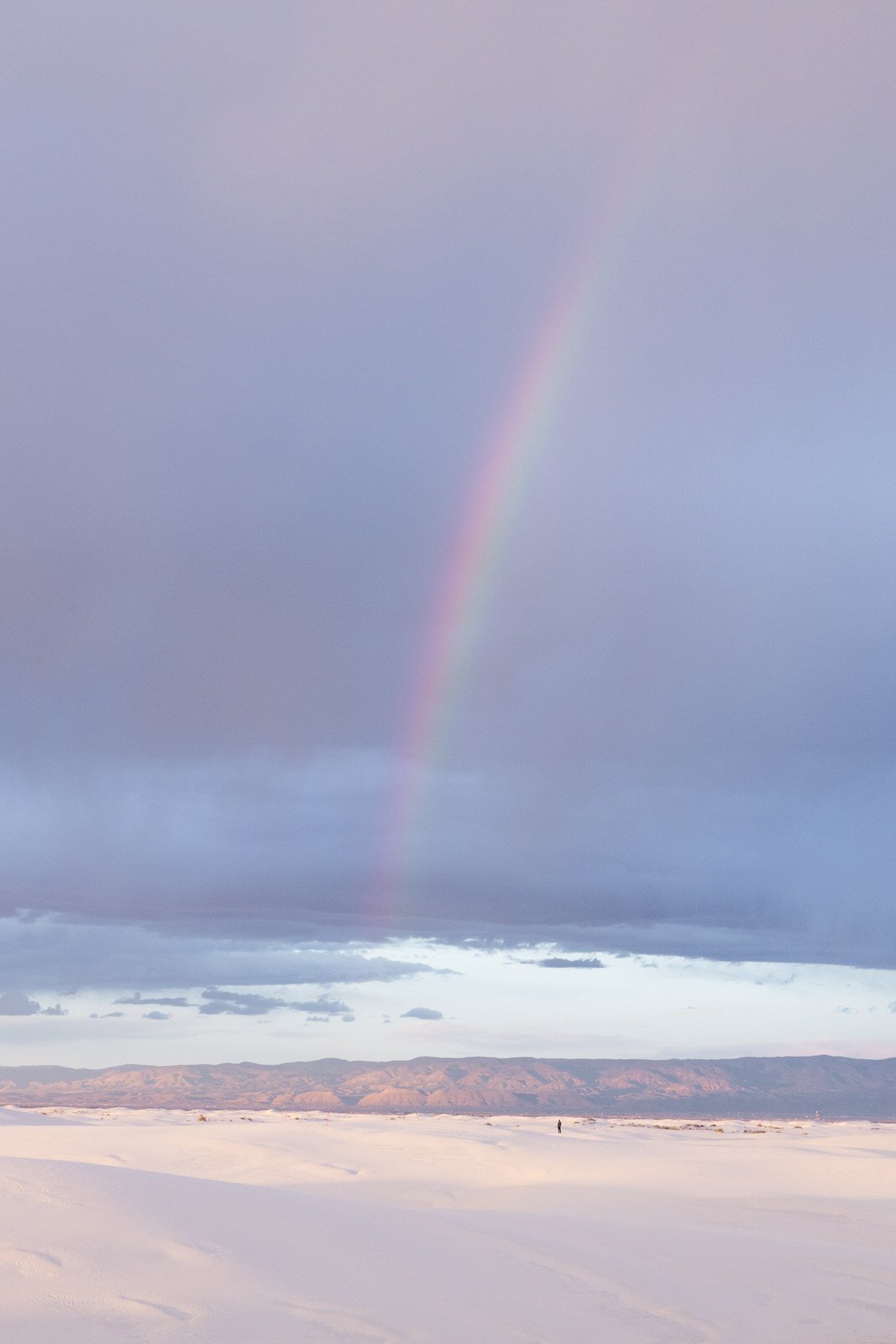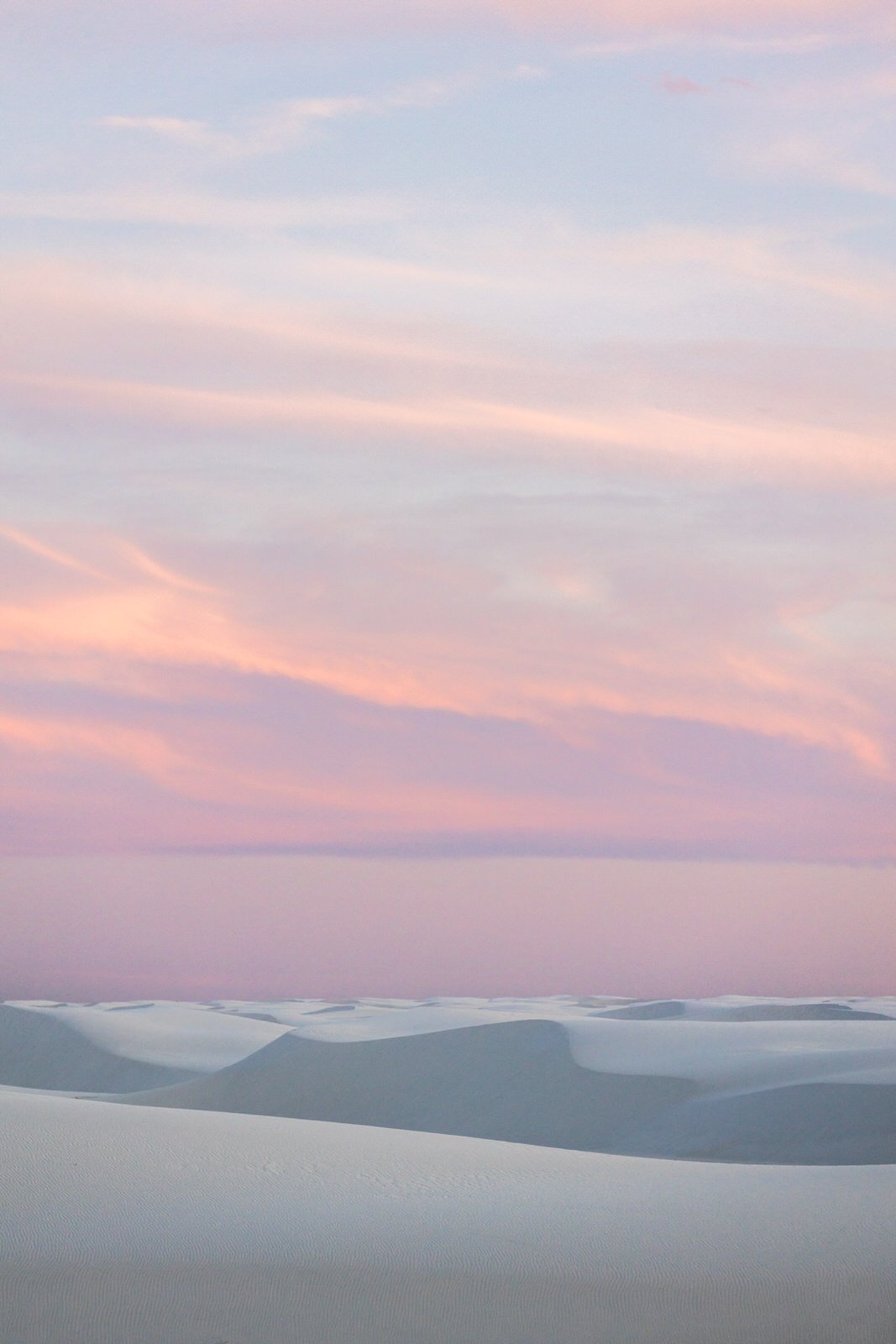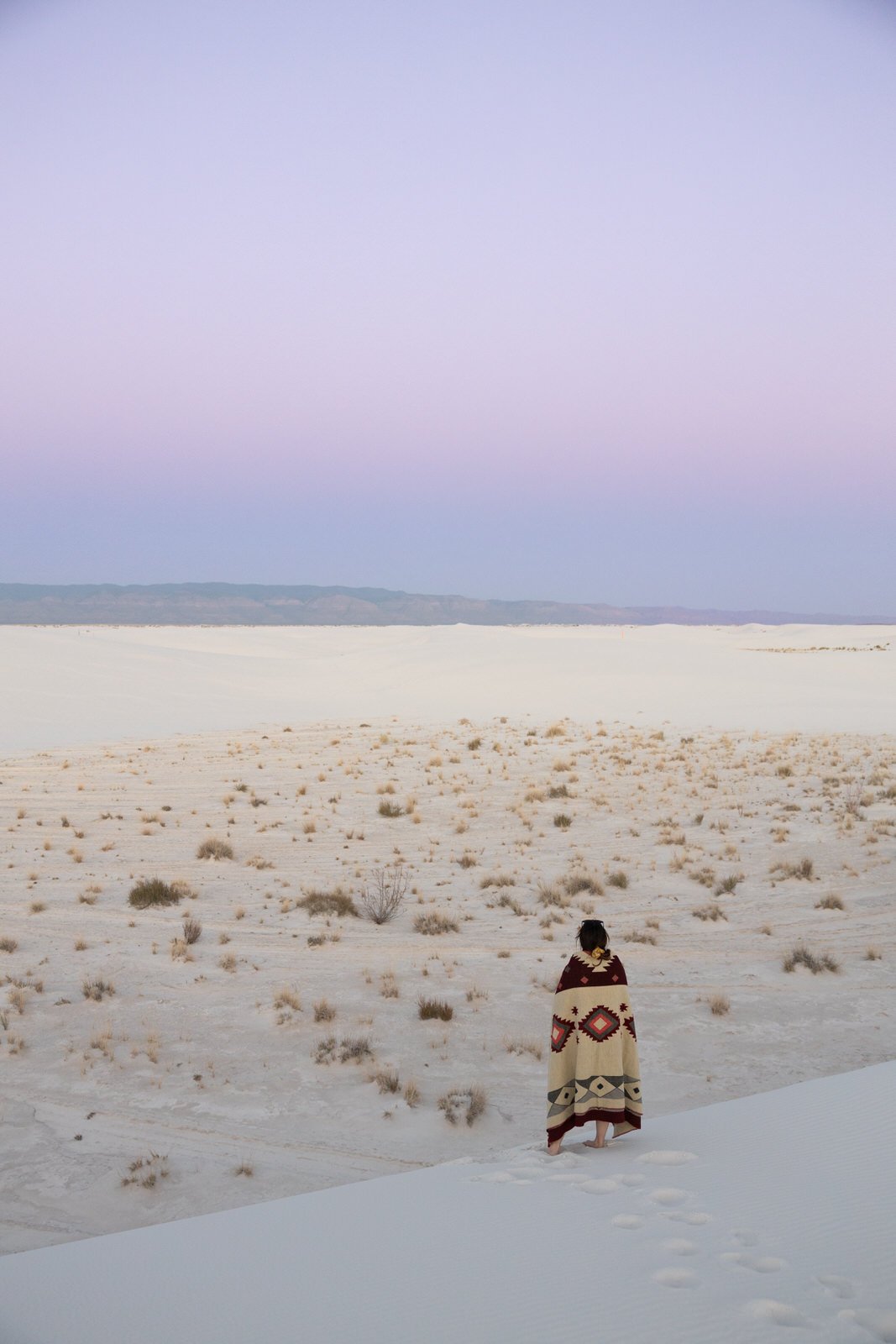White Sands National Park
“Rising from the heart of the Tularosa Basin is one of the world’s great natural wonders – the glistening white sands of New Mexico. Great wave-like dunes of gypsum sand have engulfed 275 square miles of desert, creating the world’s largest gypsum dune field.
”
Why White Sands
When the Permian Sea retreated millions of years ago, it left behind deep layers of gypsum. Later, water from melting glaciers dissolved the mineral and returned it to the basin. Today, rain and snow continue the process. Wind and water break down the crystals making them smaller and smaller until they are sand. Steady, strong southwest winds keep gypsum sand moving, piling it up and pushing dunes into various shapes and sizes.
The People
Throughout history, people have been drawn to the White Sands of the Tularosa Basin. Even before the glistening gypsum dune field formed, nomadic hunters stalked game through the lush grasslands along the shores of ancient Lake Otero. For over 10,000 years, people have called this place home. The stories of their lives have been recreated by archaeologists who study what they left behind.
The Animals
Several species of animals have developed very specialized means of surviving in this harsh environment, enabling them to thrive in a place with very little surface water and highly mineralized groundwater. In fact, the park is home to more than 800 different animal species, many of them nocturnal. Included in this number are species from all groups of the animal kingdom: mammals, reptiles, amphibians, birds, fish, and invertebrates.
Above info from the National Park Service
The drive into and around the dunes is 16 miles starting as a paved road and eventually leading into hard-packed sand.
The park has many large parking lots where you can set out into the dunes.
There are a few walkways with plaques describing the history and information about the area.
But the best way to explore the dunes is to start at one of the main trailheads and just wander.
Another great option is to head out to a dune and have a picnic.
One of my favorite things to do was wander around looking for unique patterns created by the light in the dunes.
The textures in the sand vary throughout the dunes as well. From soft sand to harder crystalized parts between the dunes.
Vegetation within the dunes.
As the sun starts to set, the colors really start to come alive on the horizon.
Sunsets were a highlight of the experience with each night having a unique show.
On one of the days exploring we noticed a storm rolling in. The park started to empty in anticipation of the rain. We decided to stay which created some of the most stunning views we saw that week.
Rainbows and cotton candy skies before and after the storm.



